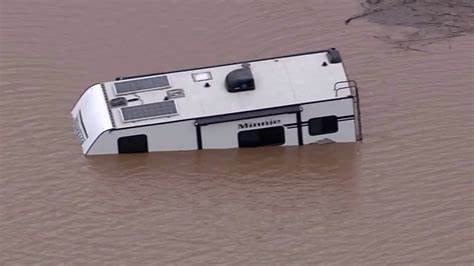Phoenix welcomes the rain. The Valley is built on the desert and has been experiencing years of drought.
However, residents might be seeing more rain than they wish, according to recent studies. National Weather Service data shows that early 2023 has seen more rain in a few days than in six months of 2022. The rain is continuing into March and doesn’t seem to be slowing down.
Here in the Valley, residents can experience flash flooding and have little experience or knowledge of how to react. C2 Tactical hosts a series of classes in Disaster Preparedness, as well as the C2 Overland website for camping and trail safety.
These tips are from experts to help you prepare in case you catch yourself driving in a flash flood zone.
Be mindful of the weather
Once water arrives, it can act quicker than most assume. Water floods can travel from 25 mph to 75 mph! Residents should be cautious driving during a heavy storm. There are plenty of dips, as we live in a valley, so be mindful of your area and streets that would flood first.
You might assume your car, truck or big camper can drive through heavy rain. This is not a good assumption to make. Many vehicles, including large vehicles, become trapped in heavy water.
Whatever you do, do not drive through restricted areas! They are restricted by officials for a reason. Do not even try to drive around these restricted areas as you can still end up in a flooded area.
Remember that it only takes six inches of rain water to knock you down and a foot of moving water to sweep your vehicle away.
Subscribe to weather alerts
One way to be prepared is by subscribing to weather alerts on your phone or computer. Android or iPhones have access to updated weather forecasts.
You can set your notifications to receive weather alerts as well. These actions are dependent on your phone but, it’s wise to turn these alerts on when there’s constant rain like we are experiencing recently.
Campers should know their area
Every resident and traveler should know their area, however, especially if you are new to town. Research can help save lives. Certain areas of the Valley are more prone to flooding so, if you’re a trailer or camping vehicle, it’s wise to pull over and see where you’re headed when it’s raining.
The desert also means that we have less trees and foliage to stop water from traveling. Areas of Arizona are different in this way. Up north, travelers might see more trees and a different terrain than they would in the mountains of Sedona or the valleys of Phoenix.
Certain areas are susceptible to groundwater rise. Please look at maps available to you online to check your area, and avoid areas with streams, rivers or creeks during rainfall as they can flood extremely quickly.
Have a plan
In the case that your car is stuck in flooding and you cannot drive out, it’s important to prepare first with a plan. All vehicles are different and will require different actions. However, you should keep a tool handy for if it’s necessary to break a window open or saw a seatbelt free.
Be sure that if you’re traveling with family in another car that you have a regroup plan. Where will you meet if something occurs? Do you have a working cell phone to call for help? Is there cell service in this area?
Flash flooding can happen at any time during a severe storm. If you’re caught in a flash flood while driving, do not panic. If flood water rises around your car but isn’t moving, leave your car and get to higher ground. Don’t leave your car if the water is rushing around you.
For more information on camping and trail safety, visit c2overland.com.
Vince Vasquez is managing member of C2 Tactical, voted Arizona’s best indoor gun range.



